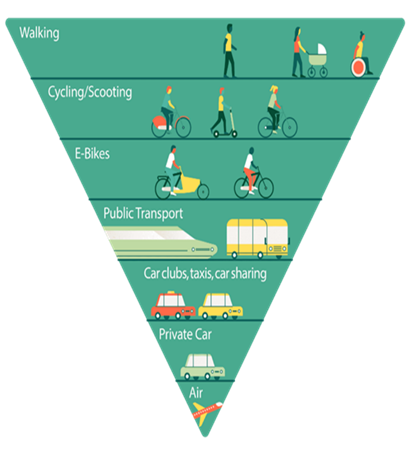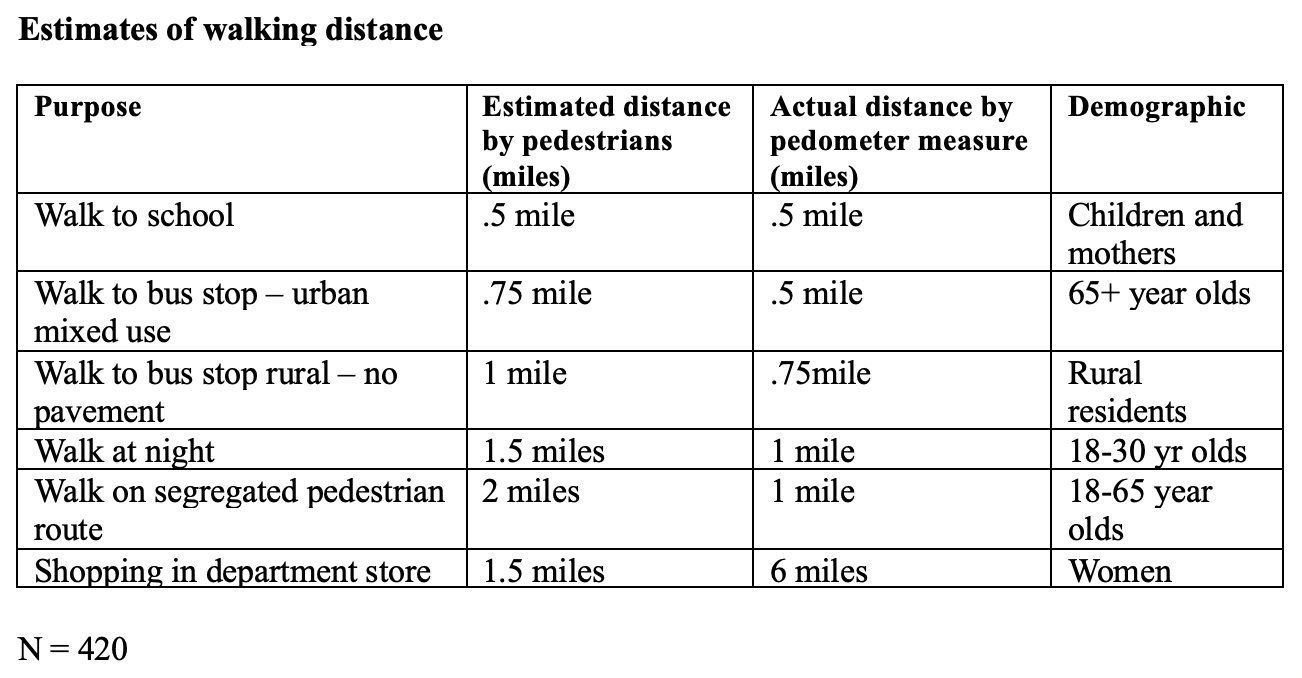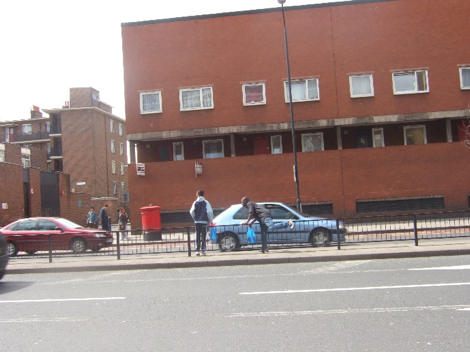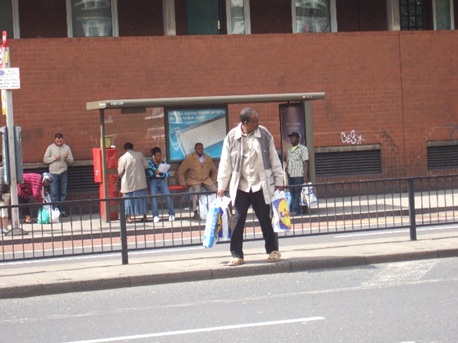TAPAS.network | 3 February 2025 | Deep Thinking | Kris Beuret and Terence Bendixson
Time to end walking’s role as transport’s Cinderella mode


This paper is prepared by Kris Beuret and Terence Bendixon with support from Peter Jones and Kit Mitchell
IF WE ARE to genuinely think deeply about the future of transport, let’s start by properly recognising the mode that is used almost universally, is resource-light, carbon neutral, inexpensive, is the most space efficient mode, does not require significant major new infrastructure and is really good for the physical and mental health of the user. And that is walking.
Sadly, however, this mode is often forgotten, usually marginalised at both political and technical levels, and has no great commercial forces and supplier industries pitching for it. Thus, walking has Cinderella status in the professional transport world.
Over 40 years ago, in 1981, Mayer Hillman and Ann Whalley flew the flag for this neglected part of the transport equation when they published Walking is Transport. But have things improved since then? Our verdict is ‘nothing like enough’.
In some ways the news is not completely bad – at least relatively. Compared with 2019, the 2023 National Travel Survey shows that walking increased to 29% of all trips - higher than for all other developed countries bar Switzerland. This is reflected in the average total distance walked (225 miles per person) being the highest on record since 2002 but with the average length of trips not changing. And, in trips involving more than one form of travel, 60% began with, and 28% ended with, a walk. Most trips to and from school of under a mile were made on foot in 2023 - 80% for children aged 5 to 10 and 89% for children 11 to 16. However, the general accuracy of data on walking is complicated by changes in survey techniques such as recording short walk trips and spreading out the day of the week on which they were recorded on the week’s travel diary.
A challenge to the transport profession
So on a wider basis how accurate, and suitable, are the statistics, and how comprehensive our wider knowledge and understanding? And what can be done especially by ourselves as transport professionals to better the understanding of, experience of, and provision for walking - and thus increase the amount of it taking place and its contribution to a less damaging overall transport offer?
First, we need better data. A range of problems can be identified. Analysis is clouded by widespread reporting of cycling and walking together as ‘Active Travel’, although they are very different in many ways in terms of both function and user demographics[1]. For several social and cultural reasons, in recent years there has been disproportionate emphasis on cycling[2]. Reweighting is widespread due to challenges with obtaining representative samples for the NTS. (The response rate is only 29% for lower income and non-car owning households.)[3] Journeys under a mile are only collected for one sample day (albeit now staggered), and finally many people don’t perceive walking as transport so don’t recognise and record these trips. The recording of accident and casualty data often omits walking falls compared to for example cyclists falling off due to a pothole. Moreover, we know very little about the quality of the walking experience, especially for those trips unconsidered, deferred or abandoned due to difficulties in making them[4].
One critical matter is the treatment of walking in the transport technical language of ‘journeys’ and ‘trips’. Almost all movement involves some walking elements to access other mechanised modes, provide links in trip chains, or do the last mile from the carpark, station or bus stop. But, remarkably, and perhaps suspiciously, very short walking journeys and 'chain' walk stages are not recorded at all by the likes of Transport for London and the Department for Transport, and rarely fully reported in other data collection surveys.
Secondly,: we must implement the hierarchy of budget, staff and policy priorities depicted in many Local Transport Plans, and make the tough decisions required where modes conflict. Walking is often proudly presented as the top concern, and the mode to be promoted as the first choice. But that is not the situation on the ground with the largest part of the transport budget directed at car traffic.

The Transport Hierarchy as appearing in many local transport plans
Better actions are particularly needed over conflicts between provision for walking and cycling. One example is the design of ‘floating’ bus stops where people on foot have to cross cycle lanes on the nearside of bus stops to get to and from pavements. Another arises from only counting vehicles (and bikes) at junctions, instead of using smart technology to also record people walking.
The design of streets raises other issues. Traffic calming, seating, low traffic neighbourhoods, planting and wider pavements are, in some places, well designed, but even the best often divert displaced traffic onto main roads. Yet this rather than purely residential areas is where most walking takes place. Street design can also neglect security or offer unsuitable facilities for people walking, such as the provision of seats without restful backs. Another common problem is not taking on board how people walking perceive distances depending on the purpose, ambience and environmental experience of their walk. Thus, many underestimate walking distances when passing interesting mixed-use environments, compared to segregated walkways where distance tends to be overestimated. Another factor in the overestimating of distance when times to cross are longer or traffic noise louder[5]. There is also a need to understand more about walking as experienced by different vulnerable groups[6].

Behavioural influences on walking (Beuret, K., 2025 forthcoming www.krisbeuret.com)
Air pollution is another deterrent to walking, with many people believing (and feeling) that pedestrians are more exposed to it than the occupants of cars (although it may be that the reverse is true). This was one of the main reasons given for driving secondary school children to school in the recent Transport for the North Transport Related Social Exclusion research[7].
Actual and perceived safety also shapes walking. Many of the actions of local authorities are determined by regulations and engineering practice, rather than the behaviour and desire lines of people on foot. Railings tick safety and risk assessment boxes, but make walking difficult, Centre of road ‘refuges’ put walkers in fear. Meanwhile, the growing number of sports utility cars (SUVs) whilst giving their users a high driving position, are a danger to those on foot due to the way their high bonnets obscure views of crossings and injure the heads of pedestrian in collisions. Even traffic noise levels affect walkers and add to the feelings of safety and security risk at noisier crossings[8].


Pedestrians crossing Old Kent Road
With all the above taken into account, the unfortunate outcome of the current situation is that much walking can often be unpleasant, unattractive – and risky. And this doesn’t just impact on walking as a sole mode, since a significant proportion of trips to both rail and bus involve a walking stage, with nearly two-thirds of rail trips and around a third of bus trips outside London including a walking component as part of the journey. Indeed, most multi-stage trips recorded in the National Travel Survey are walking stages.
So what needs to change?
Clearly, there is a need for better highway (i.e. footway) maintenance and law enforcement. This includes looking after pavements, banning pavement parking and removing unauthorised obstacles such as signage, A-boards, and hoardings.
But there is much more that needs to be done. Crossings in urban areas need to be aligned with bus stops and key destinations, street lighting needs improving and the disruption of footways by construction work and utility excavations needs proper supervision. And the needs of people with disabilities are frequently unrealised even for new developments in which there had been proper involvement by those with lived experience in the design.
The good news is that there is growing potential of AI and Intelligent Systems to help provide better and faster data on walking, including predicting casualty hot spots, and managing disruption[9]. There are also a growing number of navigation aids such as smart security supporting apps, not to mention the potential of signalling technology to identify pedestrian congestion at crossings. Other data collection as is being trailed by local authorities such as Birmingham using a combination of heat seeking counters, sensors based on Machine Vision technology and data from footfall apps.
But none of this will happen, and be used to improve matters , without a step change in our professional practice in highlighting the value and attributable benefits to those on foot in all transport schemes at the design and appraisal stage[10]. Under current systems an improved walking route does not gain the value of time benefits that a congestion- relieving or faster running road scheme does for drivers. And how often are the pedestrian trips affected by schemes measured, and understood for their contribution to the lives of those making them? Is this because the business case counts some things such as vehicle purchase or time savings, but not local spending, health impacts or a reduction in loneliness? There is also a wider benefit if a greater proportion of walking trips are to nearby destinations[11].
The key message is that priority for walking needs greater emphasis, and the case for it is strong - based on fairness, enhancing the environment, improving health and getting value for money. Furthermore, the case needs to be stitched into wider policies such as environmental targets, equality legislation and the system motoring taxation. There are a number of charities such as Living Streets pressing for such change, but a relative absence of professional expertise or awareness. Indeed, to support this view the authors are keen, with LTT magazine, on setting up a walking policy ginger group and welcome supporters, and those with suitable knowledge and experience, to join us in getting proper attention paid to this fundamental but neglected mode.
Peter Stonham, Editorial Director of TAPAS, introduces a new initiative for 2025, exploring new ways of looking at transport in its widest possible context
Alternative thinking about transport for a different future
There’s continued to be a very positive response to the launch of our LTT magazine and TAPAS initiative to start a bigger discussion about how transport should sit in the wider scheme of things as society continues on a path of rapid technological, cultural and social change. We believe new thinking, concepts and paradigms are needed to test a much wider set of future scenarios about how transport fits into the total agenda for human life on our planet – and what expectations are realistic, feasible and sustainable.
The new Government has been continuing to spell out its own new priorities; with economic growth leading the way and a raft of new policy and legislation affecting transport.
But will all this bring about real change in the way we think about transport as part of a broader social, economic and environmental equation? Is our attention still too focused on planning and providing individual modes for a familiar set of travel demands, lifestyles and mobility expectations- and getting long-cherished infrastructure wish lists fulfilled?
We want to publish new ‘deep thinking’ on this agenda – and have an open discussion arising from it. Culminating with an event in the summer where participants can leave their projects, campaigns and vested interests at the door and take part in a major ideas exchange. If you think you already know all the questions, and all the answers, feel free to remain in the echo chamber as this might just not be the right forum for you.
To get us started, we have already had reflections from Duncan Irons on shortcomings he believes are embedded in the current professional mindset about transport planning (see Duncan's article), and from Professor Glenn Lyons concerned that unwelcome forces are blocking the way to a more sustainable transport future, and how best to respond to such frustrations (see Glenn’s article). Now Kris Beuret and Terence Bendixson highlight what they believe is damaging neglect of a core part of our mobility mix. Do join the discussion with us on these important but challenging issues!
References and links
-
There are some exceptions such as the recent Sustrans report https://www.sustrans.org.uk/media/13416/sustrans-2023-walking-and-cycling-index-uk-aggregated-report.pdf
-
Transport Reviews, 2024 Vol 44, no 5 pp 937-943 “The Challenge of Measuring Walk Trips in travel surveys: https://www.tandfonline.com/doi/full/10.1080/01441647.2024.2319415#d1e116
-
Transport Statistics User Group “What’s missing from bus statistics” Beuret K. & White P, 28.01.25
-
Bypass demonstration project (DfT 1991) https://www.lgcplus.com/archive/better-places-through-bypasses-report-published-01-12-1993/
-
“Measuring Accessibility as Experienced by Different Socially Disadvantaged groups” TSG Research - Measuring Accessibility as Experienced by Different Socially Disadvantaged Groups (ESRC funded 2005 contact Sarah Wixey)
-
www.krisbeuret.com, forthcoming “Walking and Perception of Distance” (2025)
-
ITSUK Mobility and Inclusion Forum sessions on new navigational products and data requirements
-
DfT Active Mode Appraisal Tool Kit (2022)
-
TAPAS.network, 19 February 2021 Commentary by Phil Goodwin “Taking Grant Shapps’ walking and cycling targets seriously”.
Kris Beuret was Director of Social Research Associates and now works as an independent consultant on behavioural and social equity issues.
Terence Bendixson has been a campaigner for walking since he joined the Pedestrians’ Association (now Living Streets) in 1969. He is also a researcher and writer.
A shorter version of this article was first published in LTT magazine, LTT908, 3 February 2025.
You are currently viewing this page as TAPAS Taster user.
To read and make comments on this article you need to register for free as TAPAS Select user and log in.

Log in